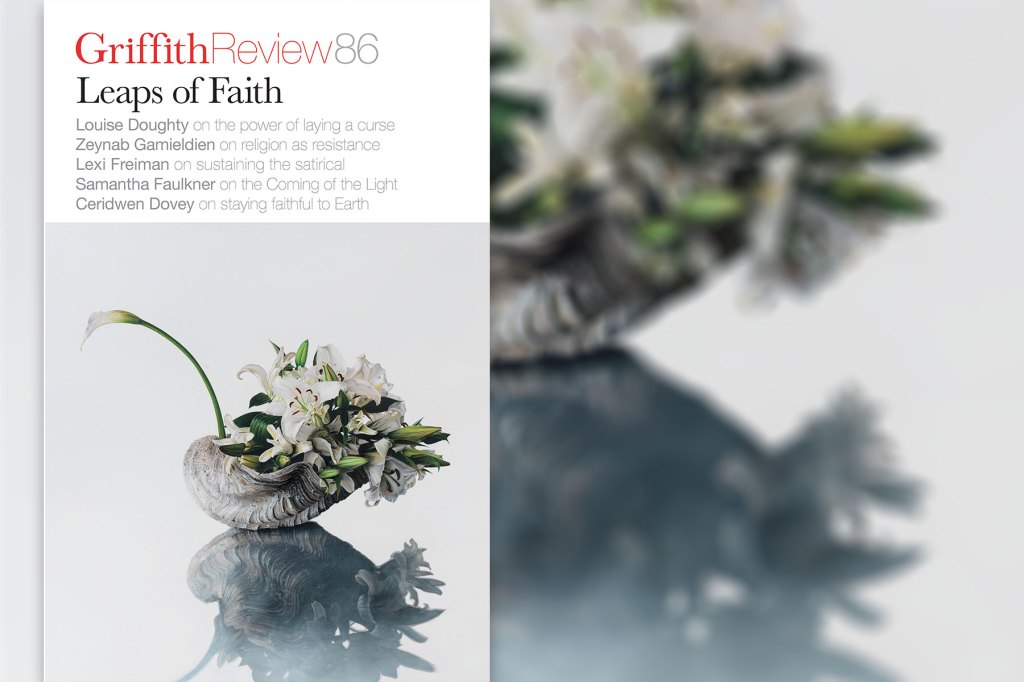Griffith Review takes a leap of faith
The latest edition of Griffith Review, Australia’s leading literary journal, offers a fascinating deep dive into the world of faith.

Pick up some literary journals and the eyes quickly glaze over. Worthiness and pretension don’t necessarily make for good reading.
Enter Griffith Review, which tends to call itself “Australia’s leading literary journal”. Turns out this is not just an idol boast because this Brisbane-based national publication is always a great read and is regarded highly across the board.
I give credit to Griffith University for maintaining Griffith Review in an age when cost cutting often hits the arts first. But the university understands that a journal like this serves as a flagship and can be the intellectual heart and soul of a tertiary institution.
I remember interviewing founding editor Julianne Schultz when it first launched. Her stewardship was a solid foundation. She had the intellectual rigour and the journalistic understanding of what makes a good read that were vital to the publication’s success. And that success has continued under various editors. The current editor, Carody Culver, continues the fine tradition established by Schultz. Culver’s latest edition is just out and it’s a cracker.
I’m fortunate to have written for this publication over the years and as a disclaimer I should point out that I have a poem in the current edition. Not sure if that’s a promise or a threat.
You might like
This edition is titled Leaps of Faith. It has a gorgeous cover featuring an artwork – The Swan – by acclaimed Brisbane artist Michael Zavros.
Leaps of Faith explores the things we believe in – from science and superstition to politics and doomsday preppers.
To take a leap of faith is to bet your belief on an unknown future. Belief is central to the human experience, whether it is religious, political, societal, philosophical or spiritual. The act of believing can be a lodestar, a comfort, a ritual, a guiding principle, a reason for living.
What’s the role of religion in an increasingly secular world? Why are we so obsessed with cults? How has the Internet and social media influenced our ability to believe what we read? These and other questions are explored in non-fiction, fiction, poetry and art.
Subscribe for updates
Author Tom Doig has been working on a book about preppers and others and his piece is called Adventures in the apocalyptic style. It’s a fascinating deep dive into a world he has been researching for some time.
Doig was on hand at Avid Reader in West End recently for the launch of this edition and he spoke passionately about his fascination with people preparing for the end of the world, as we know it.
Also on hand to chat with editor Carody Culver at the launch was Sita Walker whose piece, A cynic’s guide to unbelief, is a fascinating personal insight into faith. Walker was bought up in the Baha’i faith, which she has since left behind. Her exploration of faith underpinned her award-winning book, The God of No Good.
Her essay is interesting and eminently readable, which is a key feature of Griffith Review writing. Some journals glory in obfuscation, but I have always found Griffith Review to be refreshingly accessible, which doesn’t mean there isn’t a solid intellectual foundation to everything between the covers.
There are a number of other entertaining pieces including female rabbi Nomi Kaltman writing on faith and feminism. Writer Samantha Faulkner focuses on Christianity in the Torres Strait and the annual Coming of the Light celebration.
One for the most compelling and edifying pieces is by Brisbane writer Myles McGuire. It’s called Gay saints and is subtitled Pasolini and the sanctity of cinema.
The Italian poet, writer and film director Pier Paolo Pasolini is a fascinating character who, as McGuire points out, “embodies the contradictions inherent to Catholicism”. Pasolini, a controversial figure for his sexuality and politics, just happened to make the best gospel film of all time as far as I’m concerned – The Gospel According to St Matthew.
McGuire’s piece is a welcome discussion of this important and sometimes forgotten figure. It’s typical of the sort of fascinating fare you get in Griffith Review.
And now we have another fine edition of this important journal. The respected literary critic Geordie Williamson has described Griffith Review as “the sound of Australian democracy and culture thinking out loud”. I couldn’t agree more.
Griffith Review 86: Leaps of Faith, edited by Carody Culver, Griffith University, $27.99, griffithreview.com

